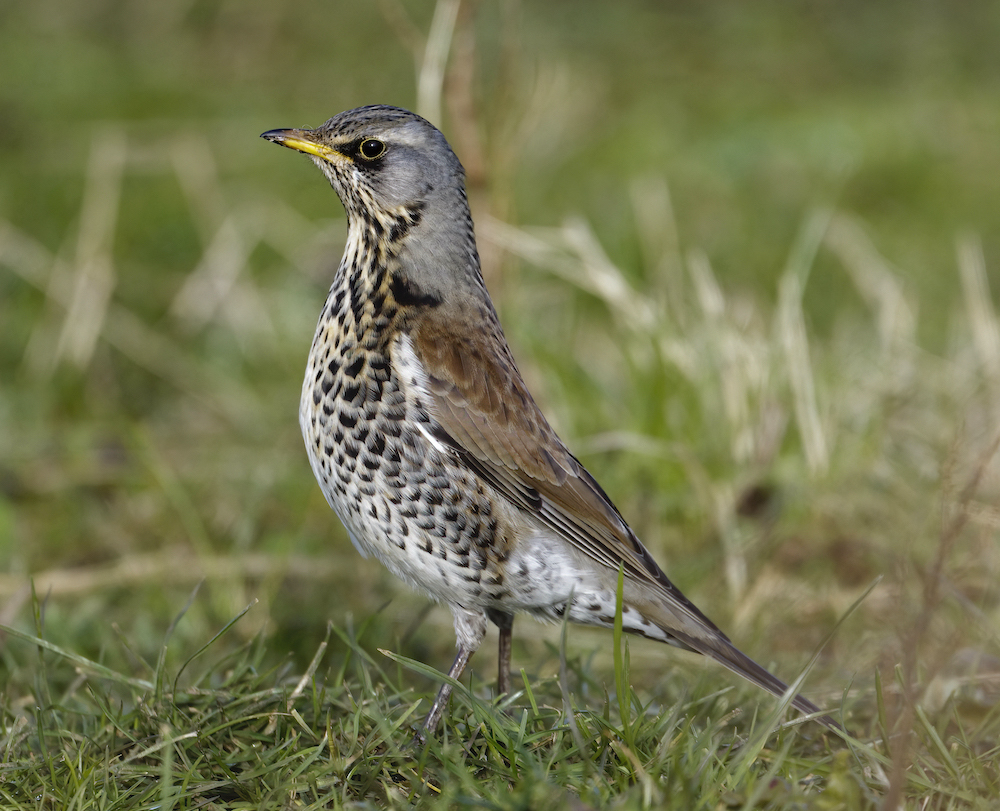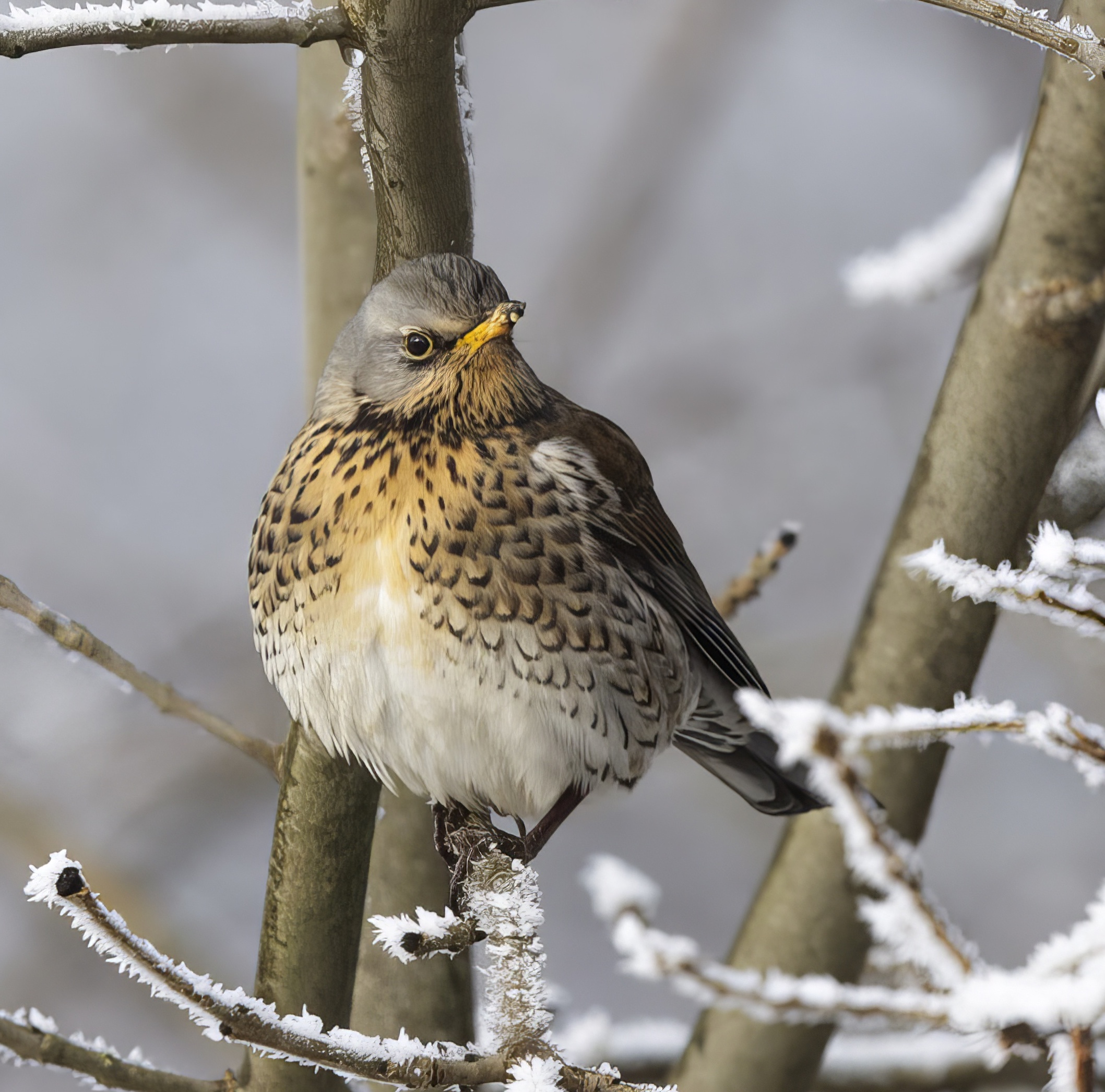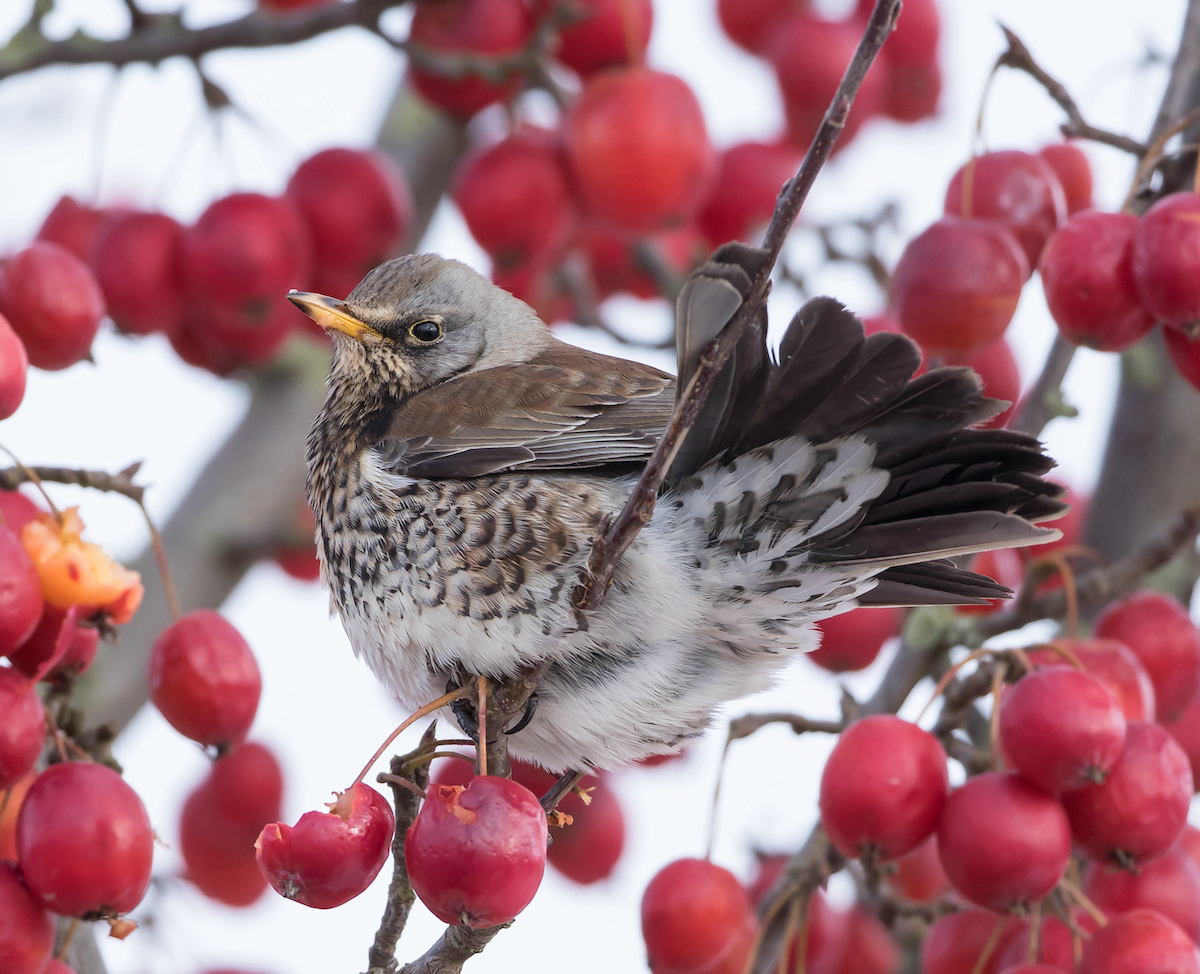Fieldfare Turdus pilaris
Very common passage migrant and winter visitor, mainly September to April; rare in summer.



Fieldfares: left, Thornton Abbey February 2009 and centre, Water's Edge CP January 2015 (Graham Catley); right, Little Grimsby March 2nd 2018 (Mark Johnson).
Thrush fortnight in early October sees the arrival of most of our wintering thrushes and the “chuk-uk-uk” call of a flyover Fieldfare is one of the sounds of autumn and winter in Lincolnshire. Many birds pass straight through heading west, but plenty stay for the winter and returning flocks boost numbers again in April. The BTO Winter Atlas 1981-84 estimated the British wintering population at 720,000 birds and there has been no formal estimate since that time. Ringing recoveries reveal that a Russian Fieldfare wintering in Lincolnshire one year might well winter in Turkey the following year. Virtually every tetrad in the county will record a Fieldfare at some point between October-April, it is a very widespread wintering bird. This is one thrush that is not prone to coastal 'falls'. The three largest flocks reported in LBR over the five years to 2018 were 2,000 at Frampton Marsh on December 6th, 2016 and 1,500 there on December 5th, 2017, and also1,672 at West Common, Lincoln on October 28th, 2018. In the past there have been occasional reports of summering Fieldfares, but these are rare with none in the five years to 2018 during which period the last birds were reported from May 5th-24th. Late birds occasionally sing but none thought worthy of reporting to RBBP since 1990.
BTO ringing data shows that foreign-ringed birds caught in the county have largely come from Scandinavia and The Low Countries. Birds ringed in Lincolnshire though have been found in a wider spread of countries - in summary, Scandinavia, Iberia and eastern Europe.
(Account as per new Birds of Lincolnshire (2021), included December 2022)
